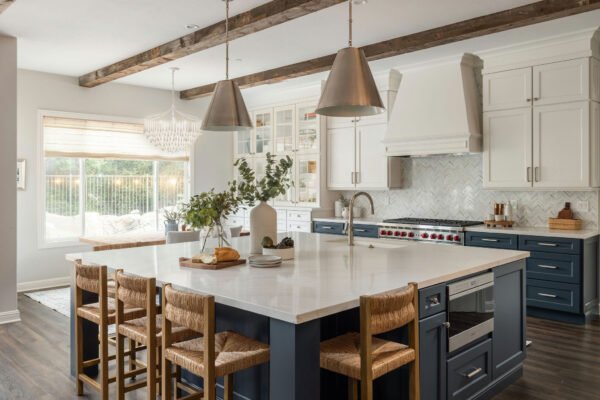
Interior Designer Reveals Common Mistakes making Your Home Look Smaller

According to a recent study, UK homes are 27 percent smaller than they were 50 years ago. With such significant shrinkage, achieving a bigger-seeming space has never been more important.
With just a few simple changes, you can totally transform the feel of your home and avoid the squeeze of a smaller space.
See below the top five mistakes I frequently see as an interior designer and how to avoid them…
Working with interior designers Naples FL ensures that your home will have a distinctive and personalized look.
Picking oversized furniture
Considering the scale and dimensions of your room as well as the items you place in it is one of the biggest factors in designing a room to look bigger.
For example, a massive sofa in a small room is not only impractical for getting around but will inevitably make your room appear smaller. A good rule of thumb when choosing a sofa is to go no bigger than two-thirds of your wall length.
The same is true when picking artwork or even choosing a TV. It may be tempting to think the bigger the better, but picking furniture and décor should not only fit your style but must also be proportional to the scale of the room. This will help your home feel more cohesive and ultimately appear more spacious.
Choosing the wrong colour scheme
While great for creating a moody, cosy aesthetic, darker colour schemes are likely to make your room feel smaller.
This is because pale shades reflect natural light, making a room feel airier and spacious. This is the main reason why homeowners are recommended to paint interiors white when selling a house.
The only caveat to this is if you are painting an already small room that has no natural light source, such as a cloakroom.
In cramped, dimly lit spaces, dark colours recede to give the illusion of more space, while light shades will seem closer. In these instances, painting a dark colour can actually add depth to small spaces and have the opposite effect of perceived distance.
Badly chosen window treatments
You should also give some consideration to the material and style of your curtains.
A weightier fabric with excessive details can promote the feeling of being dragged down if your space isn’t grand enough to accommodate heavy window treatments.
Instead, opt for a paired back design and lighter fabrics that allow some light to filter through.
How you choose to hang your curtains can also have an impact on the perceived size of your room. Hanging floor-length curtains too low will make your room feel smaller and closed in. You also want to avoid letting curtains drag along the ground as this draws the eye downward.
Instead, you should hang curtains so they skirt across the floor and are as close to the ceiling as possible. This creates the optical illusion of taller ceilings and an airier room.
Cluttered and cramped maximalism
Maximalist interior design might be all the rage, but too much décor can quickly make a room feel claustrophobic.
The trick to perfect maximalism is to balance it with some open and uncluttered areas. This will avoid a chaotic scheme and be more aesthetically pleasing to look at.
Instead of overwhelming your space with clutter, take a more intentional approach and plan your interiors around a few curated pieces. Form a colour scheme around these décor pieces and balance the scale of smaller and larger items for a harmonious look.
Neglecting lighting
Lighting is arguably the most important consideration of interior design, particularly when it comes to making a room feel bigger or smaller.
If you have a north-facing room that doesn’t get a lot of natural light, there are some tricks you easily implement to create the illusion of a bigger, brighter room. For example, strategically placing mirrors around your room will bounce light around, making your space seem lighter.
Alternatively, create depth with layered lighting by illuminating your room from different light sources, such as lamps, fairy lights and strip LEDs. Be sure to avoid harsh, overhead lighting which will make your home appear flat and smaller.
By Anne Haimes, Design Director and Founder of Anne Haimes Interiors














































